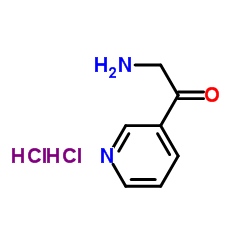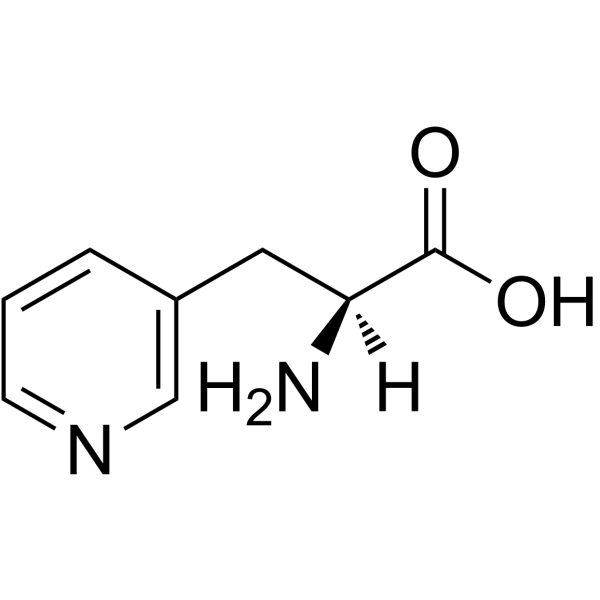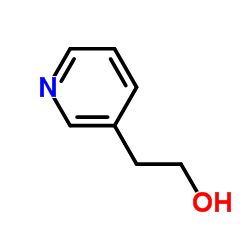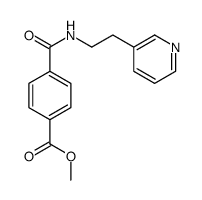20173-24-4
| Name | 2-pyridin-3-ylethanamine |
|---|---|
| Synonyms |
2-(3-Pyridinyl)ethanamine
3-aminoethyl pyridine 3-Pyridineethanamine MFCD00191604 3-PYRIDINEETHANEAMINE 2-(pyridin-3-yl)ethanamine 2-pyridine-3-yl-ethyl amine 3-(2-Aminoethyl)pyridine 2-(3-Pyridyl)ethylamine |
| Density | 1.0±0.1 g/cm3 |
|---|---|
| Boiling Point | 228.8±15.0 °C at 760 mmHg |
| Molecular Formula | C7H10N2 |
| Molecular Weight | 122.168 |
| Flash Point | 112.8±7.4 °C |
| Exact Mass | 122.084396 |
| PSA | 38.91000 |
| LogP | -0.03 |
| Vapour Pressure | 0.1±0.5 mmHg at 25°C |
| Index of Refraction | 1.541 |
|
3-(2-Aminoethyl)pyridine
Revision number: 1
SAFETY DATA SHEET Section1. BASE INFORMATION Product name:3-(2-Aminoethyl)pyridine Revision number:1 Section2. HAZARDS IDENTIFICATION Classification of the GHS PHYSICAL HAZARDSNot classified HEALTH HAZARDS Category 1C Skin corrosion/irritation Serious eye damage/eye irritationCategory 1 Not classified ENVIRONMENTAL HAZARDS GHS label elements Pictograms or hazard symbols Signal wordDanger Hazard statementCauses severe skin burns and eye damage Precautionary statements [Prevention]Do not breathe. Wash hands thoroughly after handling. Wear protective gloves/eye protection/face protection. [Response]IF INHALED: Remove victim to fresh air and keep at rest in a position comfortable for breathing. IF SWALLOWED: Rinse mouth. Do NOT induce vomiting. IF IN EYES: Rinse cautiously with water for several minutes. Remove contact lenses, if present and easy to do. Continue rinsing. IF ON SKIN (or hair): Remove/Take off immediately all contaminated clothing. Rinse skin with water/shower. Wash contaminated clothing before reuse. Immediately call a POISON CENTER or doctor/physician. Store locked up. [Storage] [Disposal]Dispose of contents/container through a waste management company authorized by the local government Section3. COMPOSITION/INFORMATION ON INGREDIENTS Substance/mixture:Substance Component(s):3-(2-Aminoethyl)pyridine >98.0%(GC)(T) Percent: CAS Number:20173-24-4 2-(3-Pyridyl)ethylamine Synonyms: Chemical Formula:C7H10N2 3-(2-Aminoethyl)pyridine Section4. FIRST AID MEASURES Inhalation:Remove victim to fresh air and keep at rest in a position comfortable for breathing. Immediately call a POISON CENTER or doctor/physician. Skin contact:Remove/Take off immediately all contaminated clothing. Gently wash with plenty of soap and water. Immediately call a POISON CENTER or doctor/physician. Eye contact:Rinse cautiously with water for several minutes. Remove contact lenses, if present and easy to do. Continue rinsing.Immediately call a POISON CENTER or doctor/physician. Ingestion:Immediately call a POISON CENTER or doctor/physician. Rinse mouth. Do NOT induce vomiting. A rescuer should wear personal protective equipment, such as rubber gloves and air- Protection of first-aiders: tight goggles. Section5. FIRE-FIGHTING MEASURES Suitable extinguishingDry chemical, foam, water spray, carbon dioxide. media: Extinguishing media not to Solid streams of water be used: Specific hazards:Take care as it may decompose upon combustion or in high temperatures to generate poisonous fume. Specific methods:Fire-extinguishing work is done from the windward and the suitable fire-extinguishing method according to the surrounding situation is used. Uninvolved persons should evacuate to a safe place. In case of fire in the surroundings: Remove movable containers if safe to do so. Special protectiveWhen extinguishing fire, be sure to wear personal protective equipment. equipment for firefighters: Section6. ACCIDENTAL RELEASE MEASURES Personal precautions,Use extra personal protective equipment (self-contained breathing apparatus). Keep protective equipment and people away from and upwind of spill/leak. Ensure adequate ventilation. Entry to non- emergency procedures: involved personnel should be controlled around the leakage area by roping off, etc. Environmental precautions: Prevent product from entering drains. Methods and materials for Absorb spilled material in a suitable absorbent (e.g. rag, dry sand, earth, saw-dust). containment and cleaning In case of large amount of spillage, contain a spill by bunding. Adhered or collected up: material should be promptly disposed of, in accordance with appropriate laws and regulations. Section7. HANDLING AND STORAGE Handling Technical measures:Handling is performed in a well ventilated place. Wear suitable protective equipment. Prevent generation of vapor or mist. Wash hands and face thoroughly after handling. Use a closed system if possible. Use a ventilation, local exhaust if vapor or aerosol will be generated. Advice on safe handling:Avoid contact with skin, eyes and clothing. Storage Storage conditions:Keep container tightly closed. Store in a cool and dark place. Store under inert gas. Protect from moisture. Store locked up. Store away from incompatible materials such as oxidizing agents. Packaging material:Law is followed. Section8. EXPOSURE CONTROLS / PERSONAL PROTECTION Engineering controls:Install a closed system or local exhaust. Also install safety shower and eye bath. Personal protective equipment 3-(2-Aminoethyl)pyridine Section8. EXPOSURE CONTROLS / PERSONAL PROTECTION Respiratory protection: Half or full facepiece respirator, self-contained breathing apparatus(SCBA), supplied air respirator, etc. Use respirators approved under appropriate government standards and follow local and national regulations. Hand protection:Impervious gloves. Eye protection:Safety goggles. A face-shield, if the situation requires. Skin and body protection: Impervious protective clothing. Protective boots, if the situation requires. Section9. PHYSICAL AND CHEMICAL PROPERTIES Liquid Physical state (20°C): Form:clear Color:Colorless - Very pale yellow Odor:No data available pH: No data available Melting point/freezing point:No data available Boiling Point/Range:128 °C/3.2kPa Flash Point:No data available Explosive limits Lower:No data available Upper:No data available Density:1.04 Solubility:No data available Section10. STABILITY AND REACTIVITY Stable under proper conditions. Stability: Reactivity:No special reactivity has been reported. Hygroscopic, Air-sensitive Conditions to avoid: Incompartible materials: oxidizing agents, acids Hazardous Decomposition Carbon monoxide, Carbon dioxide, Nitrogen oxides (NOx) Products: Section11. TOXICOLOGICAL INFORMATION Acute Toxicity:No data available Skin corrosion/irritation: No data available Serious eyeNo data available damage/irritation: Germ cell mutagenicity: No data available Carcinogenicity: IARC =No data available NTP =No data available Reproductive toxicity:No data available Section12. ECOLOGICAL INFORMATION Ecotoxicity: Fish:No data available No data available Crustacea: Algae:No data available Persistence / degradability: No data available BioaccumulativeNo data available potential(BCF): Mobillity in soil log Pow:No data available Soil adsorption (Koc):No data available No data available Henry's Law constant(PaM3/mol): 3-(2-Aminoethyl)pyridine Section13. DISPOSAL CONSIDERATIONS Recycle to process, if possible. Consult your local regional authorities. You may be able to burn in a chemical incinerator equipped with an afterburner and scrubber system. Observe all federal, state and local regulations when disposing of the substance. Section14. TRANSPORT INFORMATION Hazards Class:8: Corrosive. UN-No:2735 Proper shipping name:Amines, liquid, corrosive, n.o.s. III Packing group: Section15. REGULATORY INFORMATION Safe management ordinance of dangerous chemical product (State Council announces on January 26, 2002): Safe use and production, the storage of a dangerous chemical, transport, loading and unloading were prescribed. SECTION 16 - ADDITIONAL INFORMATION N/A |
| Symbol |


GHS05, GHS07 |
|---|---|
| Signal Word | Danger |
| Hazard Statements | H315-H318-H335 |
| Precautionary Statements | P261-P280-P305 + P351 + P338 |
| Hazard Codes | Xi |
| Risk Phrases | R34 |
| Safety Phrases | S26-S36/37/39 |
| RIDADR | 2735 |
| Packaging Group | III |
| Hazard Class | 8 |
| Precursor 9 | |
|---|---|
| DownStream 3 | |
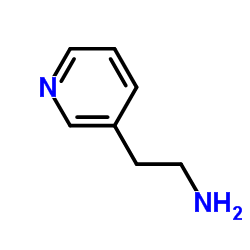
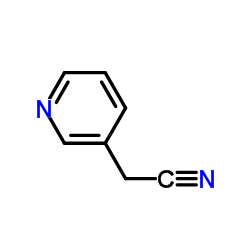
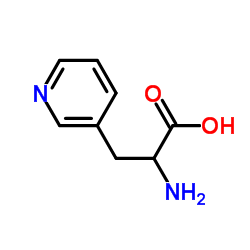
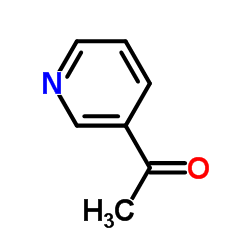
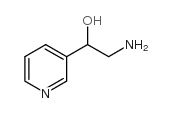

![2-hydroxyimino-3-oxo-3-[3]pyridyl-propionic acid ethyl ester structure](https://image.chemsrc.com/caspic/303/61296-12-6.png)
